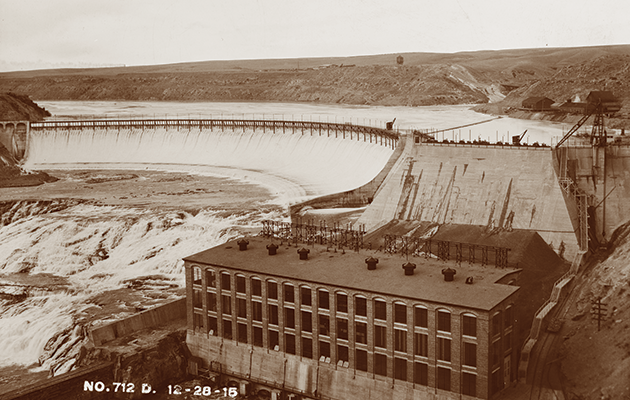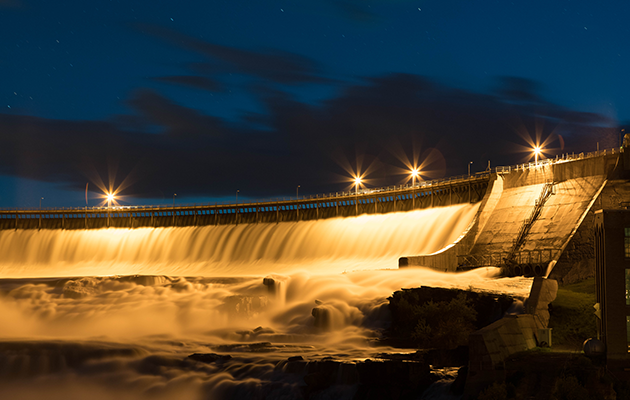
Ryan
About the Ryan Hydroelectric Facility
Ryan Dam is a 6-unit hydroelectric plant on the Missouri River, about 10 miles downstream from Great Falls Montana. Construction on the dam began in 1913 and proceeded quickly. Concrete work was completed in May of 1915 and initial generation was put in service in August of the same year. Later in 1915, three more units came online, followed by the final two of 6 in 1916.
Today, Ryan Dam has a generating capacity of 72 megawatts. More than a century after its construction, the dam can be viewed from a popular island picnic area in the river below the site.
Historic Namesake

Historic Namesake
After completion, the dam was named Volta by Henry Herrick, the designer and construction superintendent of the dam. Newspapers describes the dam as likely the largest and most modern hydroelectric plant west of the Mississippi.
John D. Ryan played a large role in developing what would become the Montana Power hydroelectric system. Before the Montana Power Company was formed in 1912, Ryan led the Amalgamated Copper Company, and later the Anaconda Company. He is praised as one of the first to see the value of electricity to mining and smelting operations and later embraced the broader financial value of electric production.
Ryan suffered a heart attack in 1933 in New York City and passed away hours later. Seven years later, the dam upstream from the "big falls," named Volta, was renamed in his honor.
A demand for growth

A demand for growth
The story of Ryan dam began in 1912, when smaller electric companies combined into the Montana Power Company. This was a period where the demand for electricity was growing along with the state. Not only was Montana Power working to provide electricity to a growing number of towns in Montana, but they were also working to feed power to the Chicago, Milwaukee, St. Paul, and Pacific Railroad and its electric Locomotives.
The solution to the growing demand; to expand upon existing dams and building new ones. This included what the company had named the "Big Falls Plant," downstream from the City of Great Falls. Construction of the dam was swift and used 205,000 cubic yards of concrete, 3,200 tons of steel, and 958,000 bricks to build the powerhouse.
"Golden Kilowatts: Water Power and the Early Growth of Montana"
Historic American Engineering Record (HAER) Documentation
Ryan Hydroelectric Facility:
- Ryan Hydroelectric Facility, Ryan-to-Rainbow 100 kV Transmission Line, West bank of Missouri River, northeast of Great Falls, Great Falls, Cascade County, MT
- Ryan Hydroelectric Facility, Powerhouse, On Missouri River, northeast of Great Falls, Great Falls, Cascade County, MT
- Ryan Hydroelectric Facility, Water Tank, About 140 feet north of Clubhouse, Great Falls, Cascade County, MT


